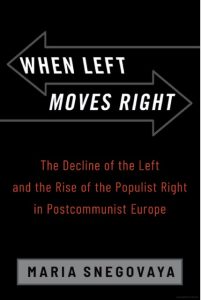- Cadres Decide All: Russia’s Foreign Policy and Nomenklatura Continuity in Ruling Circles (under contract with Oxford University Press).
Russia’s full-scale invasion of Ukraine in 2022 has renewed scholarly attention to drivers of Russian policy, both internal and external. Unlike earlier approaches either presenting Russian foreign policy as being monolith and unchangeable for centuries or as being a product of one man’s complete discretion, this book offers a novel paradigmatic approach combined with a rigorous methodology to understand Russia’s dynamic in the post-Soviet period: based on the composition and preferences of its political elites. As the book demonstrates, analysis of the Putin regime should shift away from its predominant focus on individual leaders; rather, structural characteristics, such as the lack of elite rotation and the survival of many of the same Soviet ruling groups and institutions within Russia’s political system following the collapse of the USSR are the most significant factors behind many seeming paradoxes in Russia’s recent dynamic, such as its specific re-autocratization patterns as well as foreign policy revanchism.
Using extensive novel datasets, quantitative evidence from Russian elite surveys, and a series of expert interviews, the book shows that (1) Soviet-era ruling groups’ ability to maintain its grip on Russian politics explains why most post-transition political reforms have been merely cosmetic in nature and many political institutions are relics of the Soviet era; and (2) Russian foreign policy is laden with Soviet practices. As the book explains, the elites tied to the Soviet regime tended to embrace familiar foreign policy patterns and tools congruent with their worldviews. This is because, socialized under the old regime, they tended to preserve Soviet beliefs about the world order (the notion of spheres of influence, a zero-sum worldview, anti-Westernism, and a sense of entitlement over neighboring territories), which in turn conditioned their foreign policy preferences and tools. This eventually led to the new round of tensions in Russia’s relations with the West (a renewed “Cold war”).
- When Left Moves Right: The Decline of the Left and the Rise of the Populist Right in Postcommunist Europe, Oxford University Press, 2024.

Over the past two decades, postcommunist countries have witnessed a sudden shift in the electoral fortunes of their political parties: previously successful center-left parties suffered dramatic electoral defeats and disappeared from the political scene, while populist right parties soared in popularity and came to power. This dynamic echoed similar processes in Western Europe and it raised a question: Were these dynamics in any way connected?
This book argues that they were. And that the root of the connection between them lies in the pro-market rebranding of the ex-Communist left—the key explanatory variable. I argue that, though the left’s pro-market shift initially led to electoral rewards, it had a less straightforward impact on left parties’ electoral fortunes in the long run. Traditional left supporters (working-class and economically vulnerable groups) were alienated by the new economic policies, and the middle-class voters newly drawn to these parties did not compensate for those losses. As result, several electoral rounds following the rebranding reformist left parties suffered dramatic electoral defeats. In response, right-wing parties in their respective countries adopted more redistributive economic platforms consistent with preferences of former left supporters, and incorporated sizeable shares of these electorates. This contributed to the growth of populist right parties in the countries with a pro-market left. This also made these groups available for the Kremlin’s disinformation operations.
The book traces this process in postcommunist Europe on different levels of analysis: cross-country observational data, case studies, and individual-level experimental surveys. It argues that scholars should incorporate the economic policy dimension when explaining the demise of the left and the rise of the populist right in the region. It also examines important parallels between the dynamics of Western and postcommunist countries by arguing that the idiosyncrasy of Eastern European politics has been overstated in scholarly literature.
To order a copy, please click here.